With its rich history, breathtaking landscapes, and diversity of languages and ethnicities, Yunnan Province is a cultural gem in China. Over Spring break, the region became the destination for an immersive learning trip, organized by NYU Shanghai’s Office for Community-Engaged Learning (CEL) and led by Dean of Arts and Sciences David Atwill and East Asian Studies Librarian Yurong Atwill.
The pair have a long history in Yunnan. They first met there in 1989 when David was teaching English at Yunnan University and Yurong, who is from there, was working as a translator. Since then, the two have teamed up to conduct research in the area and have returned there again and again over the past 30 years, digging deeper into Yunnan's abundant history.
Because of the province's unique geographic location, intersecting Tibet, Southwest China, and Southeast Asia, the Atwills say it is an ideal place to gain a deeper understanding of Chinese history. 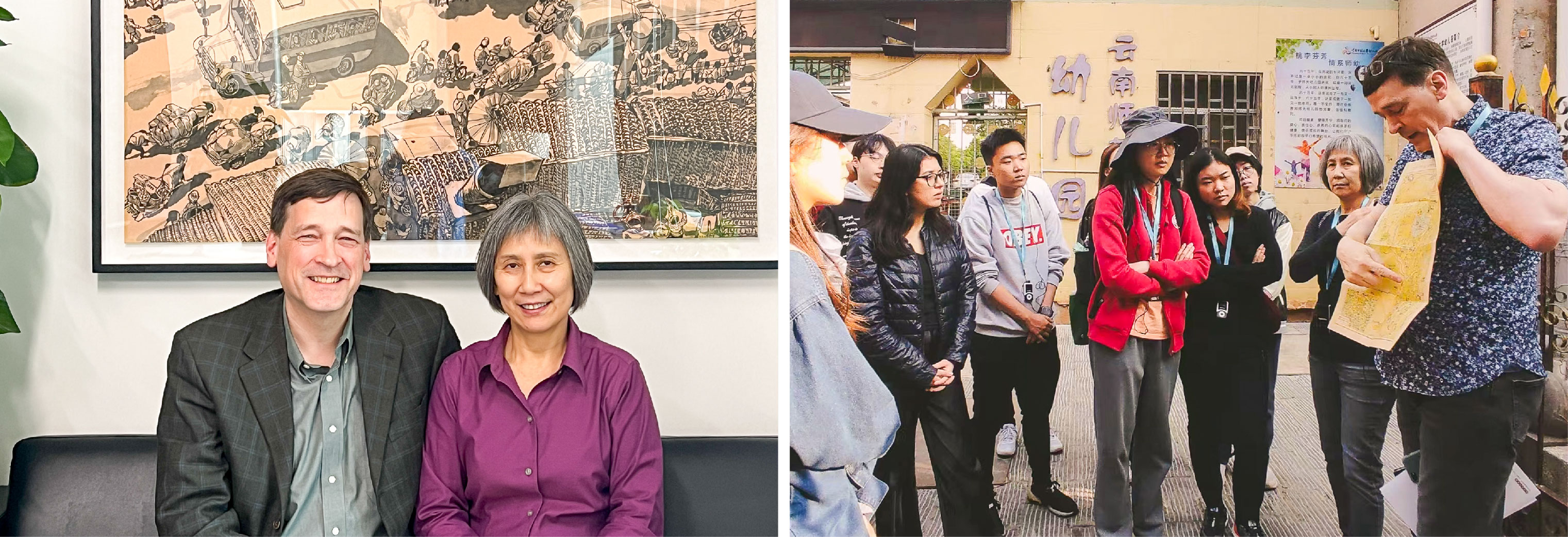
Left: Dean David Atwill and Professor Yurong Atwill pose for a photograph in Dean Atwill's NYU Shanghai office. Right: Dean Atwill and Professor Yurong Atwill lead a walking tour to the Wen Yiduo Memorial and other historical sites in Kunming.
“Often, we think of Yunnan as this remote, distant place from the center of China, but what we're trying to do is re-center students’ ideas of Yunnan,” Dean Atwill says. “We want to highlight how events that occurred in Yunnan loom large in Chinese history and are central to the China we know today.”

The region can be considered “The Crossroads of Southeast Asia,” a place where a melting pot of different cultures come together. It’s also where Buddhism evolved into many different forms and influenced much of present-day China.
On the three-day trip, the Atwills led a group of 23 students from NYU Shanghai, NYU Abu Dhabi, and NYU New York on a cultural tour through Dali and Kunming. Sponsored by NYU Shanghai’s Academic Affairs CEL Office and Dean of Arts & Sciences, their itinerary included a trip to the Three Pagodas in Dali with Yunnan University Professor Li Donghong, a tour of the Kunming Military Academy led by renowned historian, Yunnan University Professor Emeritus, Lin Chaomin, an inside look into the tie-dying techniques of the Bai people, and a visit with an internationally renowned Kunming artist Li Kunwu.
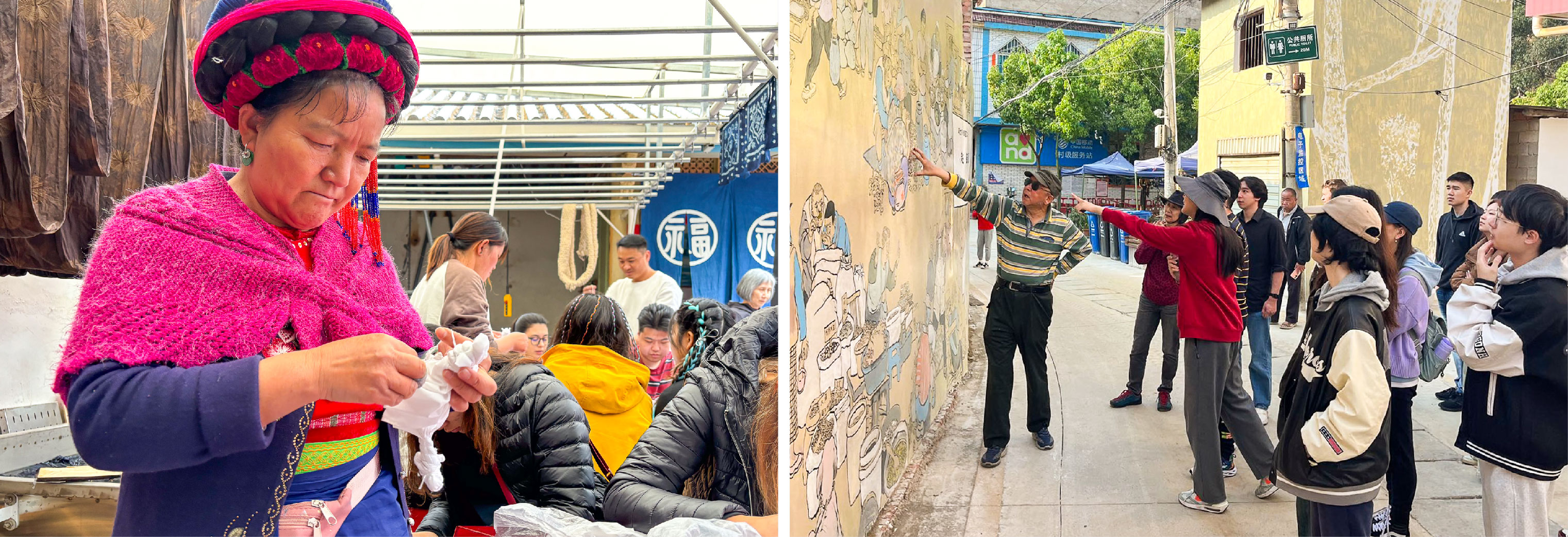
Left: The matriarch of a family-run tie dye workshop teaches students the local craft. Right: Artist Li Kunwu interacting with students in Duqu Village.
Yurong says they curated the itinerary with a specific goal in mind: to shed light upon the lesser-known people, culture, and religions of Yunnan. “We want the students to learn to think more critically and differently than a regular tourist,” she says.
Aria Xu ’27 studies Global China Studies and grew up in Shanghai. She says she appreciated being able to see Yunnan from a different perspective. “I can visit Yunnan anytime I want to,” she says, “however if I did that, I would visit the famous sites I see on social media, and I wouldn’t have learned as much about the variety of different cultures, religions, and ethnic groups.”

The Atwills planned a visit to the Three Pagodas Temple to share with students a deeper understanding of religion in China. Built in the Tang Dynasty when Buddhism was introduced to China, the pagodas symbolize changes within Buddhism as it traveled from India to China. “As you look at them, you can see the different stylistic ways they're shaped,” explains Dean Atwill. “And when we look closer at the temples surrounding them, we can see the variety of ways Buddhism took on the different characteristics of the local Yunnan culture because it was separate from China at the time.”
Hansa Mirpuri ’24 says the trip deepened her understanding of the role Yunnan played in the spread and emergence of different religions throughout East Asia. “It was just interesting to see how in this region people didn't have to pick one religion and stick with it,” she says. “For example, in one of the temples we visited, there was Buddha and there was a representation of Taoism as well as Confucianism.”
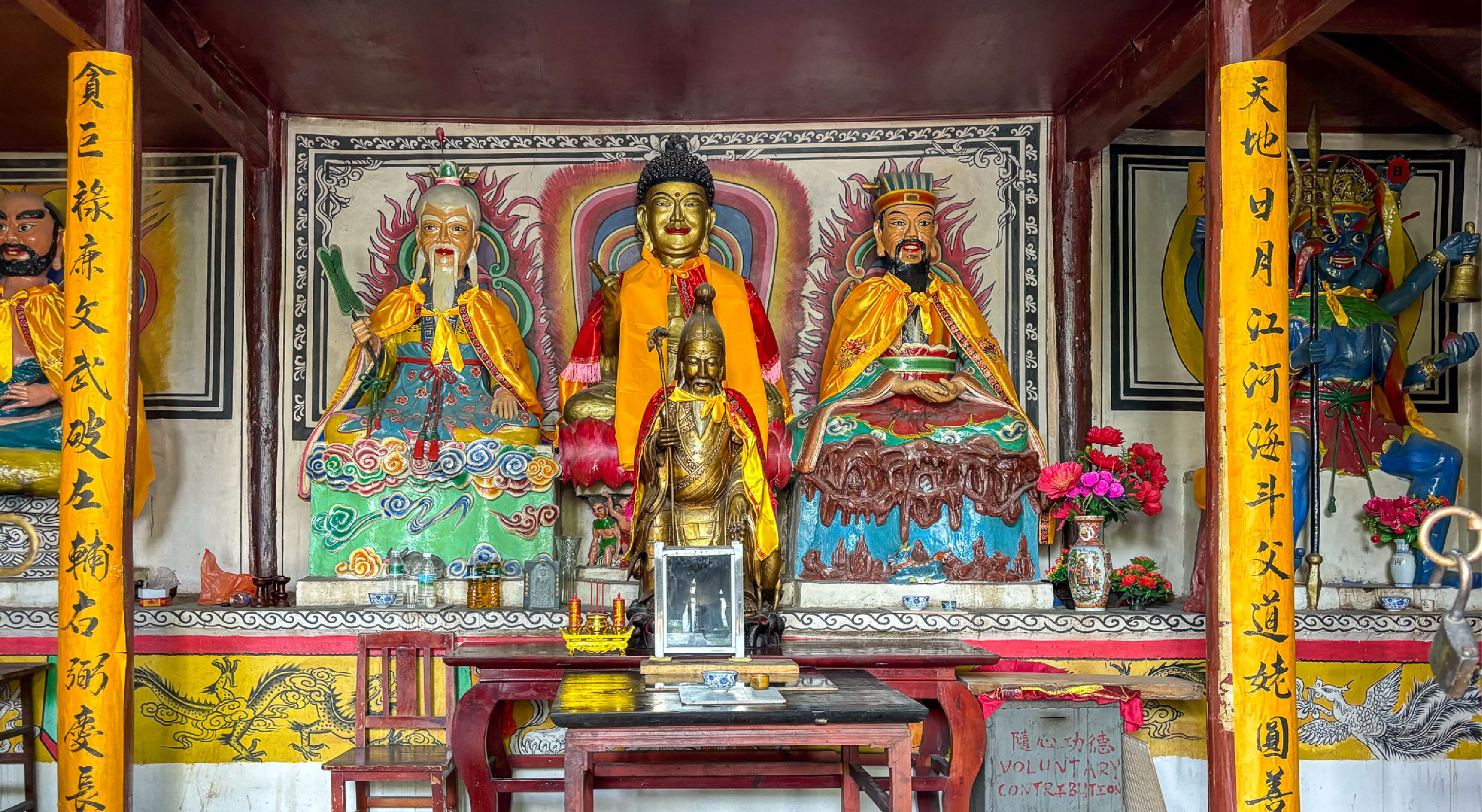
The Atwills add that they planned the temple tours to illustrate to students how multi-layered Buddhism is. “Oftentimes, we want to talk about Buddhism as this kind of monolithic, as if one wave washes over East Asia, but I think these pagodas really demonstrate Buddhism takes on different flavors of wherever it lands,” Dean Atwill says.
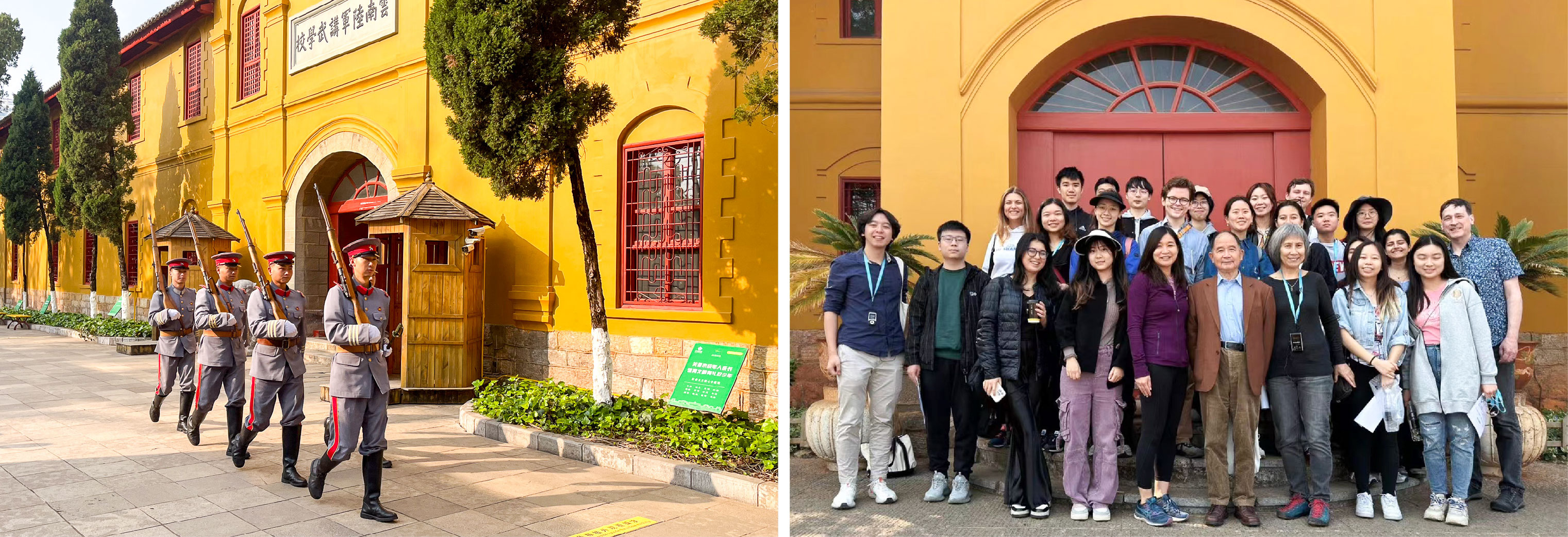
Kunming Military Academy was founded in 1909 and is one of China's earliest military academies.
Another one of the key sights students visited was the Kunming Military Academy on a tour led by notable Yunnan historian Lin Chaomin, who explained the role it played in Chinese history. Founded in 1909, it is one of China’s earliest military academies, as well as one of its most prestigious. However, by the 1930s and the start of the Second Sino-Japanese War, the academy was forced to close its doors. Notable military leaders who graduated from this school include Zhu De, Ye Jianying, Long Yun and Lu Han.
Global China Studies student Nicholas Linz ’27 says the experts exposed them to a nuanced approach to Yunnan’s history. “They helped to explain a part of history that I didn't know Yunnan was part of,” he says. “I’m ethnically Chinese and this is my first time back to China, and so it was interesting to see how this one area can have so much influence on China.”
Students say that the coordination of local guides, coupled with Professor Li and the Atwills’ extensive knowledge of the area, allowed for a more in-depth understanding and appreciation of Yunnan culture– from the variety of ethnic groups to the delightful aroma of erkuai rice cakes on every street corner.
And they say, along with broadening the perspectives, the CEL trip expanded their palettes as well. “One of the most memorable parts of the trip was trying the food. It was so interesting, the noodles are cut into thick pieces, and I ended up liking it,” Linz says.

Student Hansa Mipuri says every meal was an opportunity to learn something new. “They organized this activity called Food Bingo where we'd go around and try and see if we could find and try all the foods that they recommended in this bingo format, and treated us to Da jiu-jia,” she says. “It’s like flattened rice, noodles, stir, fried with like tomatoes and other veggies.”
Those meals were also a way for the participants to connect and forge new friendships, including the feast they shared on the last night at a family-owned restaurant. “We had great discussions and got to reflect on our moments together,” Mipuri recalls. “And you could really see the change from when we first met from our introductory meeting to when we were all together in this meal.”
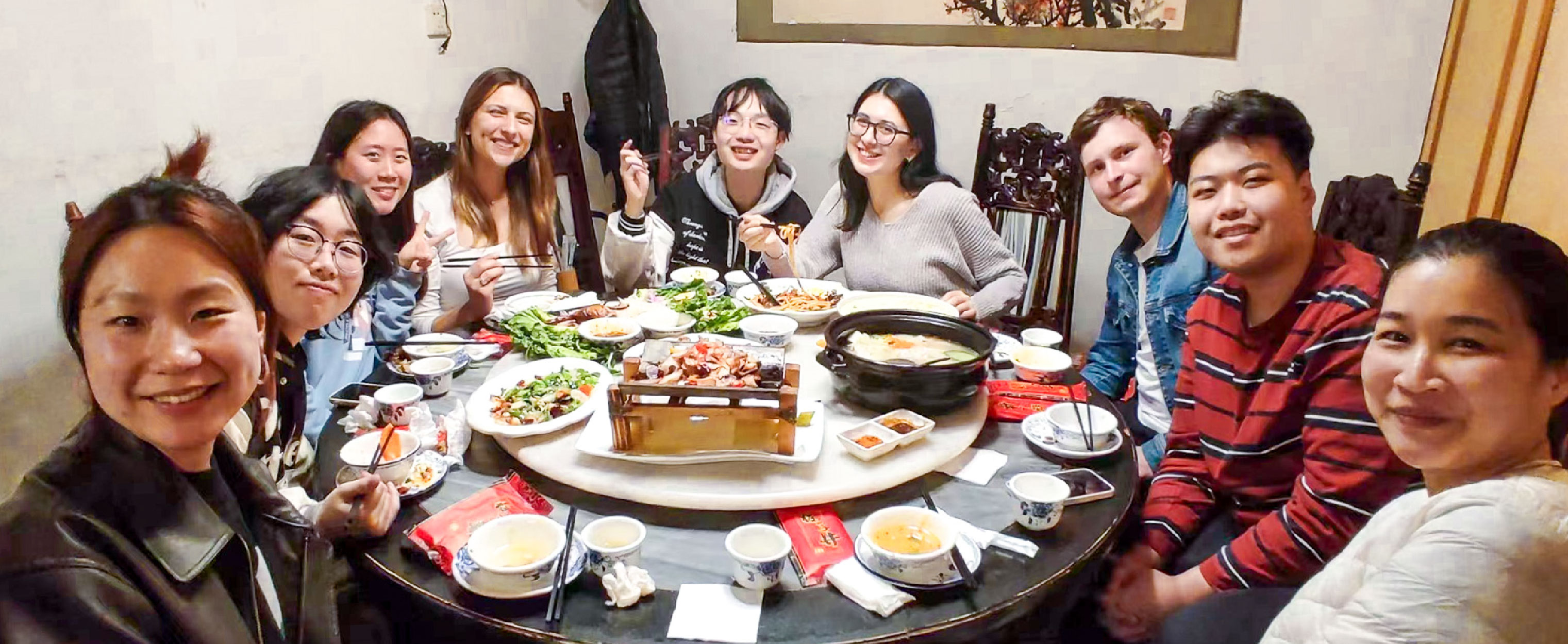
Assistant Provost for Academic Affairs at NYU Shanghai Diane Geng says student feedback has shown that these experiential research trips can not only deepen student learning, but also strengthen relationships between the students and with faculty. “Students said this kind of place-based learning with peers and faculty from diverse backgrounds embodied their motivation for coming to NYU Shanghai and helped to spark new curiosities and pathways for further study and research,” she says. The Atwills say they look forward to future trips and opportunities to expand their own perspectives and research in Yunnan.


